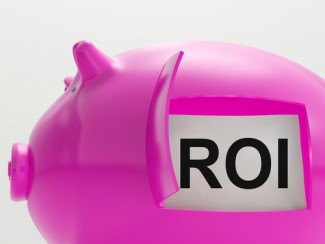Did law grad make the wrong choice? Her $300K in education debt easily fails ROI calculation

Image from Shutterstock.
Lisa K. graduated from Pepperdine law school, but she easily flunks the return-on-investment calculation.
Forbes tells Lisa’s story in a two-part article (here and here) that explains how to calculate whether grad school is worth the investment. The 39-year-old woman racked up more than $300,000 in student debt getting a master of fine arts and a JD, and is now working as a solo in a small Minnesota town where she earns about $20,000 a year.
Lisa has $70,000 in private debt that doesn’t qualify for income-based repayment. She and her 10-year-old son receive food stamps, and the boy is in the free school lunch program. She has a boyfriend, but she won’t marry him because the debt could force some of her loans out of forbearance and could hurt him financially. She can’t save for retirement or for her son’s education. And she is pregnant–a choice she made because of fears she will soon be too old to have another child.
“I will likely die before I repay this debt,” Lisa tells Forbes.
Even if Lisa had obtained a job in BigLaw she would have flunked Forbes’ seven-step test for calculating the return on educational investment. According to the formula, the cost of education is too high if total undergraduate and grad school debt are higher than the projected first-year salary out of grad school.
That’s just the first step in the Forbes formula. Those who pass the first test should then calculate lifetime earnings based on whether they go or don’t go to grad school, and how grad school will affect retirement savings.
“On the flip side, remember that grad school has many benefits that can’t be quantified in dollars,” Forbes says. “Ultimately, the numbers can pretty much only tell you when you should definitely steer clear. In other cases where it’s not so obvious, they can give you a rough estimate of how the extra degree could affect your earnings, but you’ll have to weigh the quantitative and the qualitative together to decide what ‘return on investment’ really means to you.”



